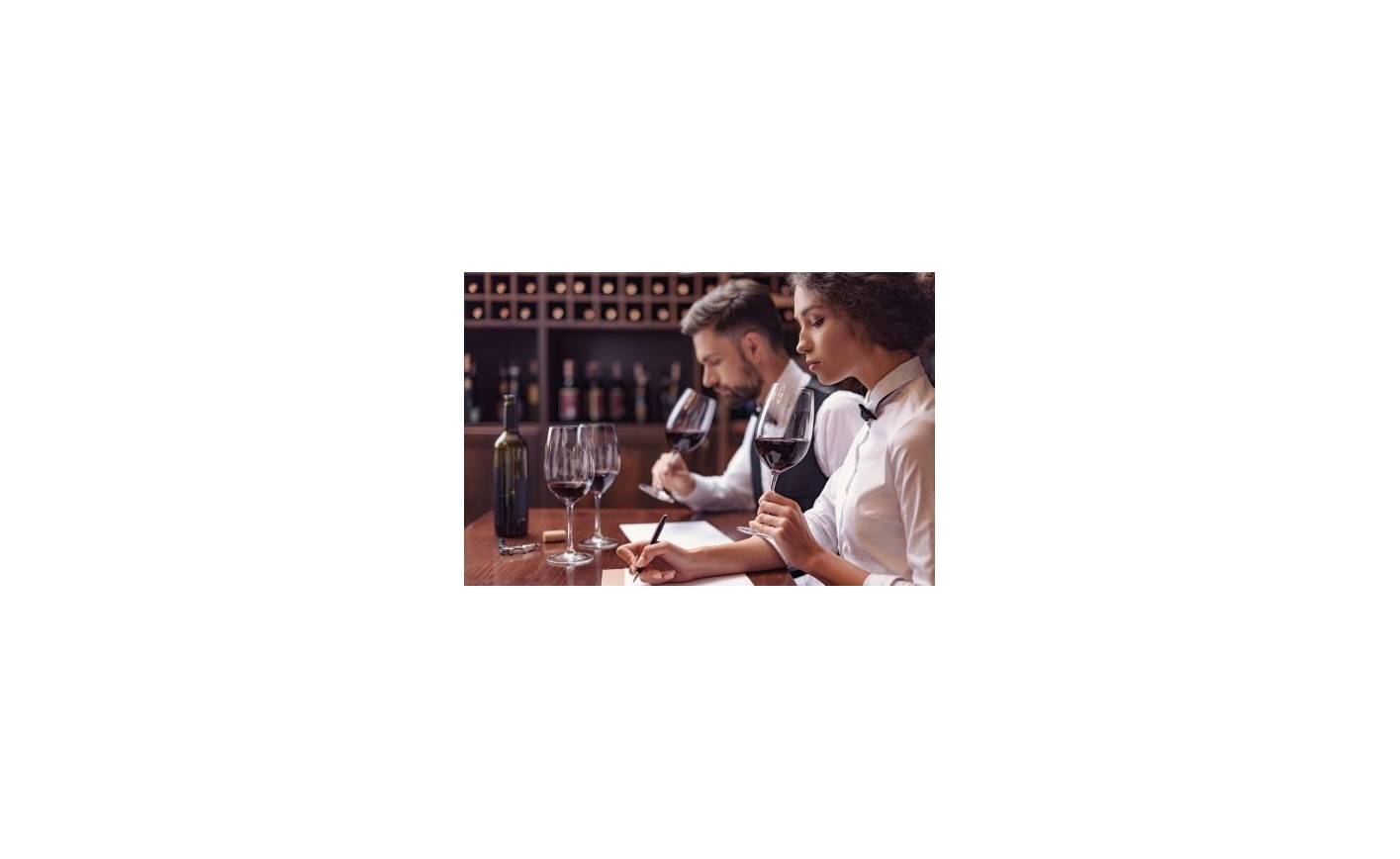HOW TO TASTE A WINE STEP BY STEP
08/06/2024 12:41:38
Home

Tasting wine is an art that involves engaging several senses to evaluate the wine's characteristics and quality. Here are the steps to taste a wine properly:
1. Preparation
- Environment: Choose a place with good lighting and free from strong odors that could interfere with the tasting.
- Glassware: Use a clear, crystal wine glass appropriate for the type of wine you're tasting.
- Temperature: Ensure the wine is at the correct temperature (red wines between 59-65°F or 15-18°C, white wines between 45-50°F or 8-12°C).
2. Visual Examination
- Color: Tilt the glass against a white background and observe the color and hue of the wine. Young wines tend to have more vibrant colors, while older wines might have more subdued tones.
- Clarity and Brightness: The wine should be clear and bright. Cloudiness can indicate a fault in the wine.

3. Smelling the Wine
- Initial Sniff: Without swirling the glass, take a quick sniff to get the initial aromas. This provides a sense of the wine's intensity and primary aromas.
- Swirling: Gently swirl the wine in the glass to release more aromas. This action helps to aerate the wine and bring out more of its bouquet.
- Secondary Sniff: After swirling, take a deeper sniff and try to identify various notes, such as fruit, floral, herbal, spice, and other complex aromas.
4. Tasting the Wine
- First Sip: Take a small sip and let the wine coat your entire mouth. Pay attention to the balance of sweetness, acidity, tannins, and alcohol.
- Texture: Notice the texture of the wine. Is it smooth, velvety, or rough?
- Flavors: Identify the flavors that come through. Do they match the aromas you previously noted? Are there new flavors?
- Finish: Observe the aftertaste or finish of the wine. A good wine often has a long, pleasant finish that lingers on the palate.

5. Overall Assessment
- Balance: Consider if all the components (aroma, flavor, texture, acidity, alcohol, tannins) are well-balanced.
- Complexity: Reflect on the complexity of the wine. A complex wine will reveal different aromas and flavors over time.
- Impression: Think about your overall impression of the wine. Did you enjoy it? Was it interesting and memorable?
Additional Tips
- Comparison: If possible, taste several wines side by side to better understand the differences and nuances.
- Notes: Keep a journal of your tastings, noting your observations and ratings. This can help you track your preferences and learn over time.
- Continued Learning: Participate in wine tastings led by experts, read about different grape varieties and wine regions, and continually expand your knowledge.

Tasting wine can be a highly rewarding and enjoyable experience. Cheers!


